When temperatures drop in Houston, even our mild winters can leave you shivering if your furnace isn’t functioning properly. The difference between a cozy home and an emergency repair call often comes down to one factor: regular seasonal maintenance. While Houston residents may not run their heating systems as frequently as northern states, the intermittent use actually makes proper furnace service even more critical.
Your furnace sits idle for months during our long cooling season, accumulating dust and potentially developing issues that only become apparent when you need heat most. According to the U.S. Department of Energy, heating accounts for approximately 29% of utility bills in moderate climates like Houston’s, making efficient operation essential for both comfort and cost control.
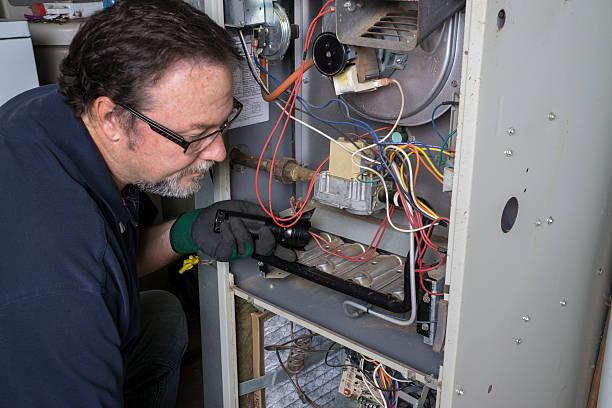
Understanding Your Furnace: Components That Need Regular Attention
Before diving into maintenance schedules, it’s crucial to understand what makes your furnace tick. Modern heating systems consist of several interconnected components, each requiring specific attention during service visits.
Critical Furnace Components
The heat exchanger serves as your furnace’s heart, transferring warmth from combustion gases to your home’s air supply. Over time, thermal stress can cause hairline cracks that pose serious safety risks, including carbon monoxide leaks. Professional technicians use specialized equipment to detect these microscopic failures before they become dangerous.
Your furnace’s blower motor works harder than almost any other component, circulating thousands of cubic feet of air daily when in operation. Bearings require lubrication, belts need tension adjustments, and the motor itself needs cleaning to prevent overheating. A failing blower motor often announces itself through unusual noises squealing, grinding, or humming sounds that shouldn’t be ignored.
The ignition system, whether it’s a traditional pilot light or modern electronic ignition, requires regular cleaning and adjustment. In Houston’s humid environment, corrosion can affect these components even during months of inactivity, leading to frustrating no-heat situations when you need warmth most.
Seasonal Maintenance Timeline: A Year-Round Approach to Furnace Care
Strategic timing of furnace maintenance maximizes efficiency while minimizing the risk of unexpected breakdowns. Houston’s unique climate demands a tailored approach that differs from standard northern maintenance schedules.
Fall Preparation (September-October)
Fall represents the ideal window for comprehensive furnace service in Houston. With temperatures still comfortable but cooling season winding down, technicians have better availability, and you’ll have time to address any issues before the first cold snap.
- Complete system inspection including heat exchanger examination
- Clean or replace air filters (mark your calendar for monthly checks)
- Test carbon monoxide detectors and replace batteries
- Verify proper ventilation and check for blockages in flue pipes
- Calibrate thermostat for heating mode operation
- Inspect and clean burner assembly
- Check gas connections for leaks using electronic detection
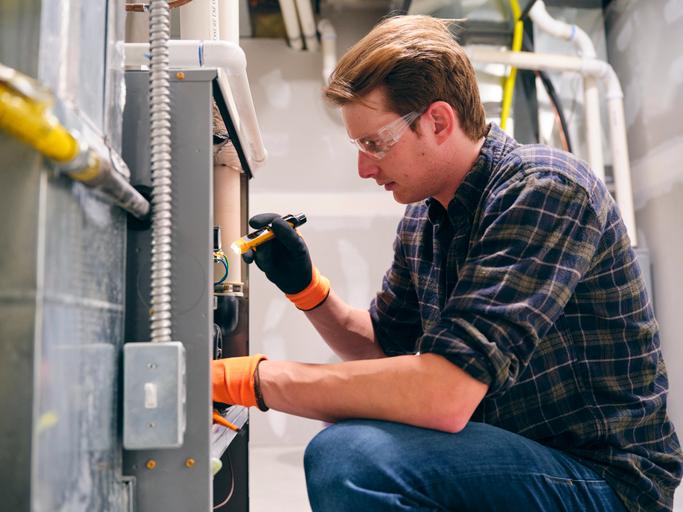
Winter Monitoring (November-February)
During Houston’s heating season, vigilance becomes your best defense against furnace problems. While professional service handles major maintenance, homeowners play a crucial role in ongoing system health.
Monitor your heating cycles carefully. A properly functioning furnace should maintain consistent run times without short cycling (turning on and off rapidly). If you notice your system running constantly without reaching set temperatures, or cycling every few minutes, immediate professional attention is warranted.
Listen for unusual sounds during operation. As HVAC expert James Rodriguez, with 20 years of Houston-area experience, notes: “A furnace should operate with minimal noise a gentle whoosh of air and perhaps a subtle click at startup. Banging, rattling, or screeching sounds indicate mechanical issues requiring prompt attention.”
Spring Shutdown (March-April)
As Houston transitions to cooling season, proper furnace shutdown procedures extend equipment life and prevent summer-related damage.
- Schedule final heating season inspection
- Clean or replace filters one last time
- Clear debris from outdoor venting systems
- Cover or seal exterior components to prevent pest intrusion
- Document any performance issues for fall service discussion
Common Furnace Problems and Professional Repair Solutions
Understanding typical furnace failures helps homeowners recognize when professional intervention is necessary. While some issues seem minor, attempting DIY repairs on gas-powered equipment poses serious safety risks.
Ignition System Failures
Modern electronic ignition systems offer improved efficiency over standing pilot lights but require specialized knowledge to diagnose and repair. Symptoms include repeated clicking sounds without ignition, intermittent heating, or complete system failure.
Professional technicians use multimeters to test ignitor resistance, ensuring proper electrical flow. Replacement parts must match manufacturer specifications exactly using incorrect components can damage control boards costing hundreds or thousands of dollars.
Heat Exchanger Cracks
Perhaps the most serious furnace issue, cracked heat exchangers allow carbon monoxide to enter your home’s air supply. The American Gas Association reports that improper heating equipment causes approximately 170 deaths annually, making professional inspection non-negotiable.
Detection requires specialized cameras and testing equipment beyond homeowner capabilities. If cracks are discovered, replacement is mandatory repairs are impossible and unsafe. While costly, early detection through regular maintenance often reveals minor issues before complete exchanger failure.
| Problem | DIY Safe? | Professional Cost Range | Urgency Level |
|---|---|---|---|
| Dirty air filter | Yes | $15-40 (filter cost) | Low |
| Thermostat batteries | Yes | $5-10 | Low |
| Pilot light out | Sometimes | $75-150 | Medium |
| Ignitor failure | No | $150-400 | High |
| Blower motor failure | No | $400-800 | High |
| Heat exchanger crack | No | $1,500-3,000 | Critical |
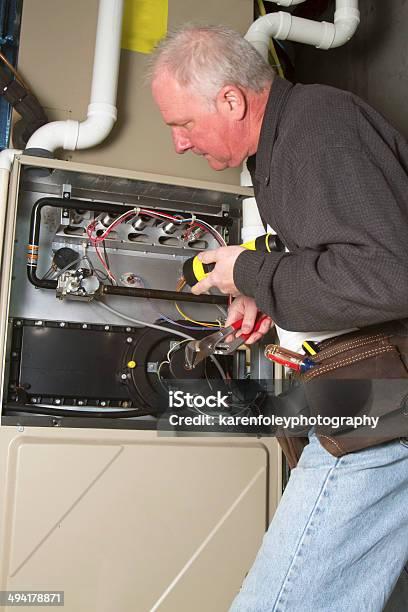
Energy Efficiency: Making Your Furnace Work Smarter, Not Harder
Houston homeowners face unique efficiency challenges. Our humid climate means furnaces work alongside dehumidification systems, and infrequent use can lead to degraded performance when heating is needed.
Optimizing Furnace Efficiency
Start with your thermostat programming. The Energy Information Administration confirms that lowering temperatures 7-10 degrees for eight hours daily can reduce heating bills by 10% annually. In Houston, where heating needs are intermittent, smart thermostats that learn your patterns provide even greater savings.
Ductwork integrity significantly impacts furnace efficiency. The Environmental Protection Agency estimates that homes lose 20-30% of heated air through duct leaks, forcing furnaces to work harder and longer. Professional duct sealing, while requiring upfront investment, typically pays for itself within 2-3 years through energy savings.
Consider upgrading to a variable-speed blower motor during your next heating system service. These motors adjust speed based on heating demands, reducing energy consumption by up to 40% compared to single-speed alternatives.
Safety First: Carbon Monoxide Prevention and Detection
Furnace safety extends beyond comfort it’s literally life-saving. Carbon monoxide, an odorless and invisible gas, poses serious risks when furnaces malfunction.
Prevention Strategies
Install carbon monoxide detectors on every level of your home, particularly near bedrooms. Test monthly and replace batteries during fall maintenance. Detectors themselves require replacement every 5-7 years mark installation dates clearly.
Never ignore warning signs: persistent headaches, dizziness, or nausea when your furnace runs could indicate carbon monoxide presence. Yellow or flickering furnace flames (instead of steady blue) suggest incomplete combustion producing dangerous gases.
Annual professional inspections remain your best defense. Certified technicians use combustion analyzers to measure carbon monoxide levels, ensuring your furnace operates within safe parameters. As veteran Houston HVAC technician Maria Chen emphasizes: “We’ve detected dangerous CO levels in homes where residents noticed nothing wrong. Professional testing saves lives.”
When to Repair vs. Replace: Making the Smart Financial Decision
Determining whether to repair or replace your furnace requires careful consideration of multiple factors beyond immediate repair costs.
The 5,000 Rule
Multiply your furnace’s age by the repair cost. If the result exceeds $5,000, replacement typically makes more financial sense. For example, a 15-year-old furnace needing $400 in repairs (15 x 400 = 6,000) suggests replacement consideration.
However, Houston’s mild climate can extend this guideline. Since our furnaces experience less stress than northern counterparts, well-maintained units often exceed typical 15-20 year lifespans.
Efficiency Improvements
Modern furnaces achieve 95-98% AFUE (Annual Fuel Utilization Efficiency) ratings, compared to 78-80% for units from the early 2000s. Upgrading from an 80% to 95% efficient furnace can reduce heating costs by nearly 20%, though Houston’s limited heating days mean longer payback periods than colder climates.
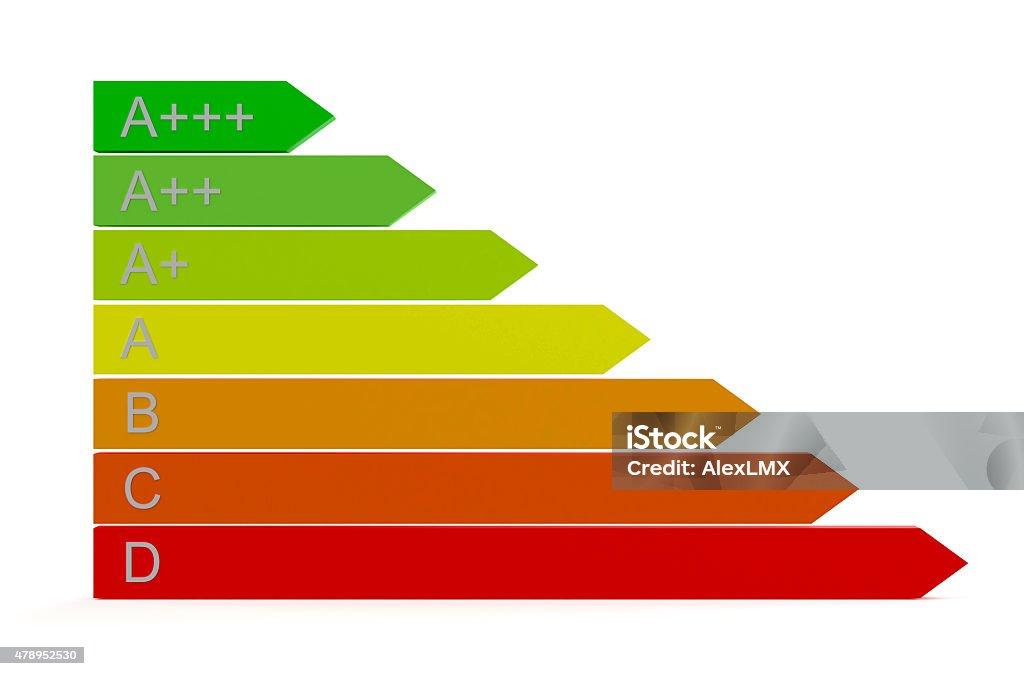
Professional Service: What to Expect from Quality Furnace Maintenance
Professional furnace service involves far more than basic cleaning. Understanding the process helps homeowners recognize quality service and avoid unnecessary repairs.
Comprehensive Inspection Process
Certified technicians begin with visual inspections, checking for rust, corrosion, or physical damage. They’ll examine venting systems for proper pitch and secure connections, ensuring dangerous gases exit your home safely.
Electrical components receive thorough testing using specialized equipment. Technicians verify proper voltage, amp draw, and capacitor function. They’ll tighten connections, as thermal expansion and contraction loosen terminals over time.
Gas pressure measurements ensure optimal combustion. Too high, and you’re wasting fuel while stressing components. Too low, and incomplete combustion creates carbon monoxide risks. Proper adjustment requires manufacturer specifications and calibrated instruments.
Documentation and Recommendations
Quality service providers document all findings, including photographs of potential issues. They’ll explain problems clearly, providing repair options with transparent pricing. Be wary of technicians who can’t explain issues or pressure immediate decisions without written estimates.
Houston-Specific Furnace Considerations
Our unique climate creates specific challenges for furnace maintenance and operation that standard guides often overlook.
Humidity Impact
Houston’s average 75% humidity affects furnaces even during non-use periods. Moisture corrodes metal components, degrades electrical connections, and can cause control board failures. Running your HVAC fan periodically during summer months helps circulate air and reduce moisture accumulation.
Dual System Coordination
Most Houston homes feature combined heating and cooling systems sharing ductwork and blower motors. This integration means AC problems can affect heating performance and vice versa. Comprehensive maintenance addresses both systems, ensuring seamless transitions between seasons.
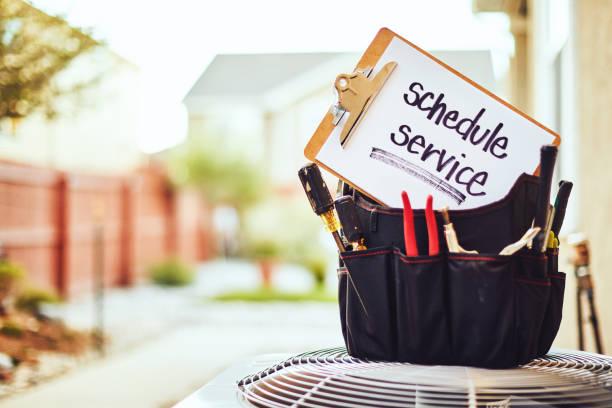
Frequently Asked Questions About Furnace Service & Repair
How often should I change my furnace filter in Houston?
During heating season (November-February), check filters monthly and replace when visibly dirty. Houston’s humidity and occasional dust can clog filters faster than manufacturer recommendations suggest. During non-heating months, quarterly checks suffice unless you’re running the fan for circulation.
Why does my furnace smell when first turned on for the season?
Dust accumulation during Houston’s long non-heating period burns off during initial operation, creating a distinctive smell. This typically dissipates within 30 minutes. However, persistent burning smells, rotten egg odors (indicating gas leaks), or electrical burning scents require immediate professional attention.
Can I perform furnace maintenance myself?
Basic maintenance like filter changes and keeping vents clear is homeowner-appropriate. However, gas furnaces require professional service for safety and warranty reasons. Texas law doesn’t prohibit DIY furnace work, but insurance may deny claims for damage from unlicensed repairs.
How long do furnaces typically last in Houston?
Houston furnaces often exceed the national 15-20 year average due to limited use. With proper maintenance, 20-25 years is achievable. However, efficiency improvements in newer models may justify earlier replacement for energy savings.
What size furnace do I need for my Houston home?
Proper sizing requires professional load calculations considering square footage, insulation, windows, and Houston’s climate. Oversized furnaces short-cycle, reducing efficiency and comfort. Undersized units run constantly without maintaining temperature. Professional calculation ensures optimal sizing.
Conclusion: Protecting Your Investment Through Professional Furnace Care
Your furnace represents a significant investment in home comfort and safety. In Houston’s unique climate, where heating systems face challenges from humidity, intermittent use, and integration with cooling systems, professional maintenance becomes even more critical. Regular seasonal service not only prevents inconvenient breakdowns but also protects your family from carbon monoxide risks while maximizing energy efficiency.
The key takeaways for Houston homeowners are clear: schedule professional maintenance each fall before heating season, address unusual sounds or performance issues immediately, and maintain consistent filter changes year-round. By following these seasonal maintenance tips and partnering with qualified HVAC professionals, you’ll ensure reliable heating when those occasional cold fronts sweep through our city.
Remember, the cost of prevention pales compared to emergency repairs or premature replacement. A well-maintained furnace provides decades of efficient service, while neglected systems fail when you need them most typically during Houston’s coldest days when service availability is limited.
Ready to ensure your furnace is prepared for Houston’s next cold snap? Don’t wait until you’re shivering to discover furnace problems. Contact 75 Degree AC today at (713) 598-2737 to schedule your comprehensive furnace inspection and maintenance service. Our certified technicians provide honest assessments, transparent pricing, and the expertise your heating system deserves. Schedule online for immediate confirmation and take advantage of our seasonal maintenance specials because your family’s comfort and safety can’t wait.
